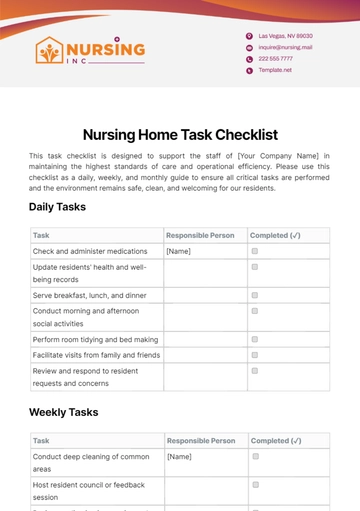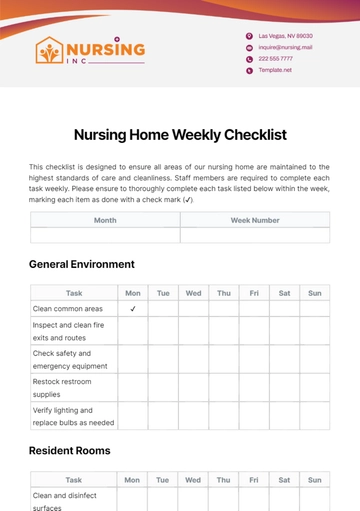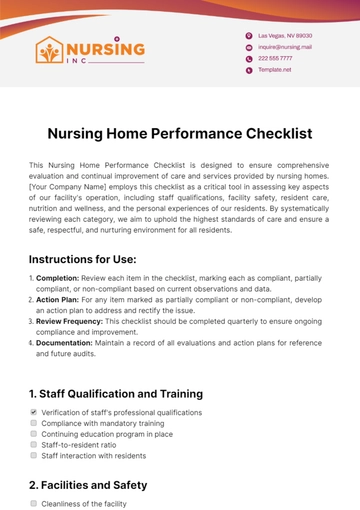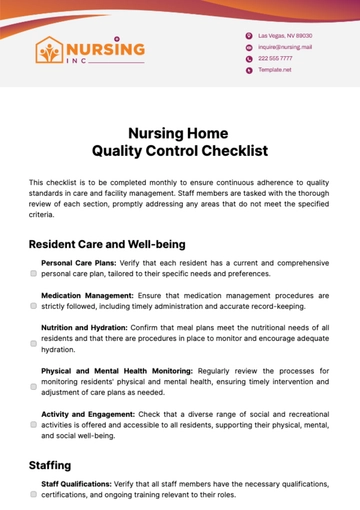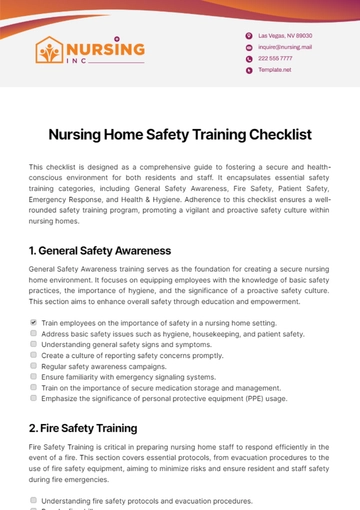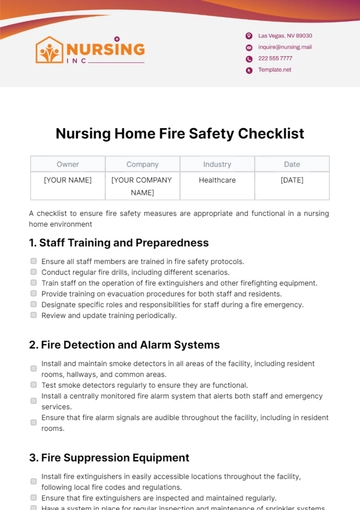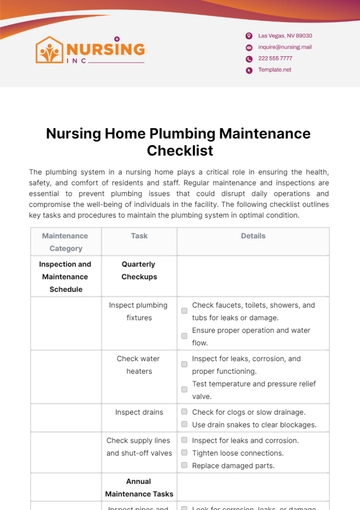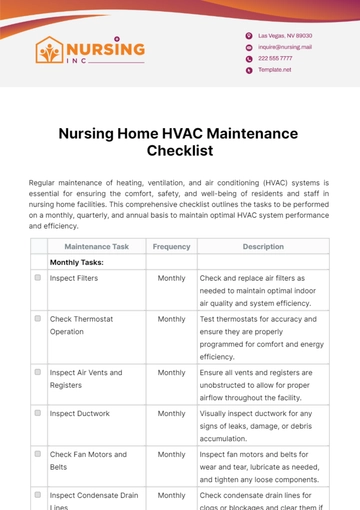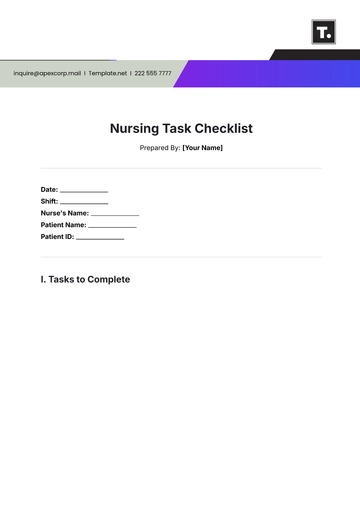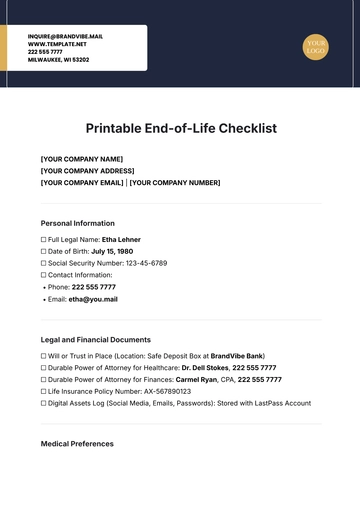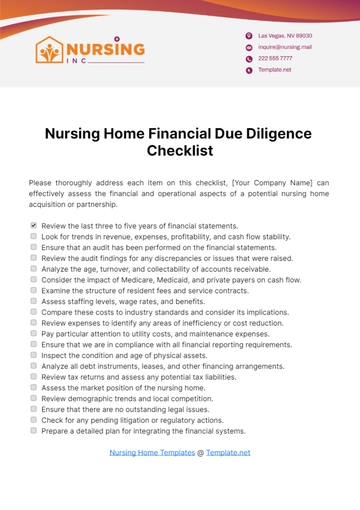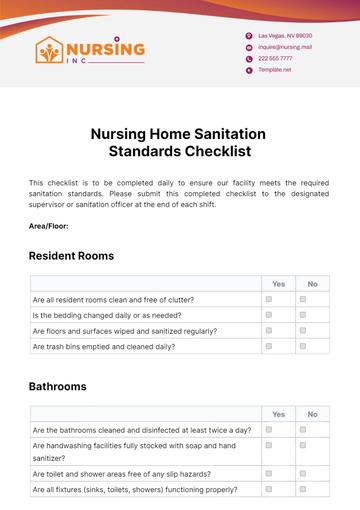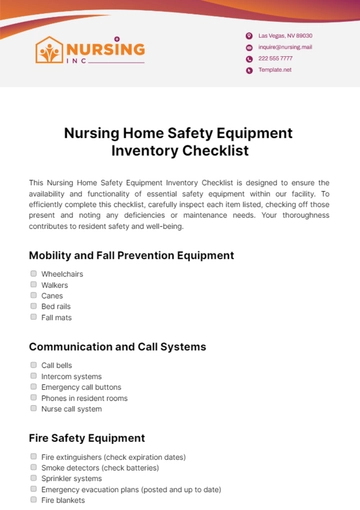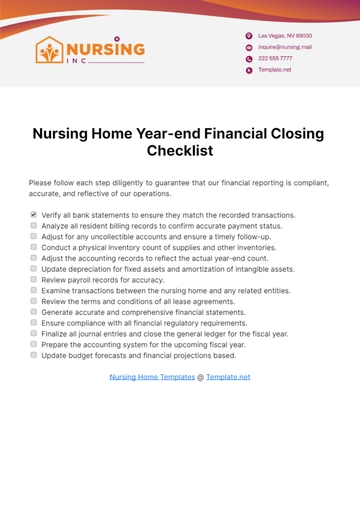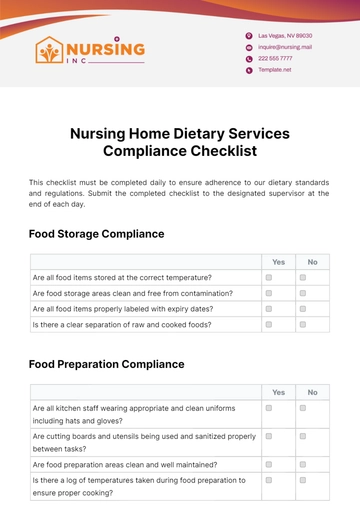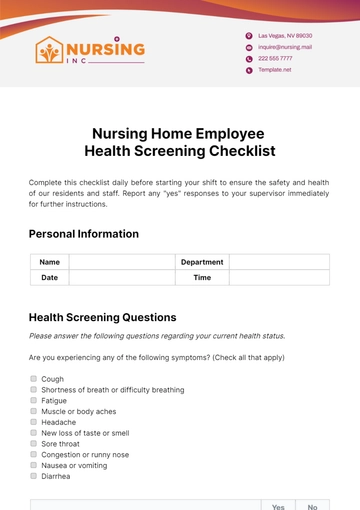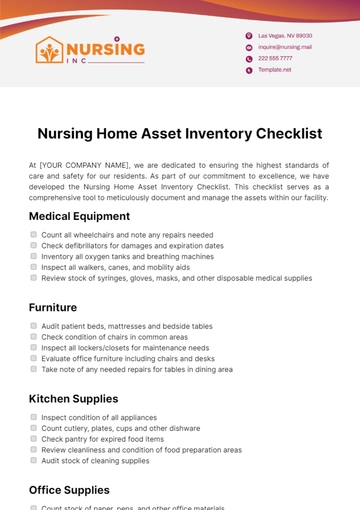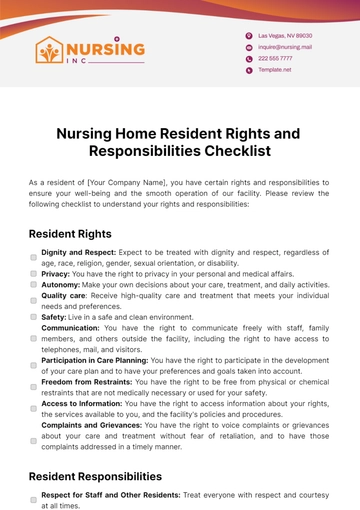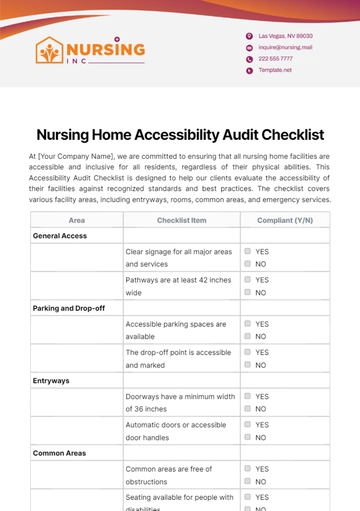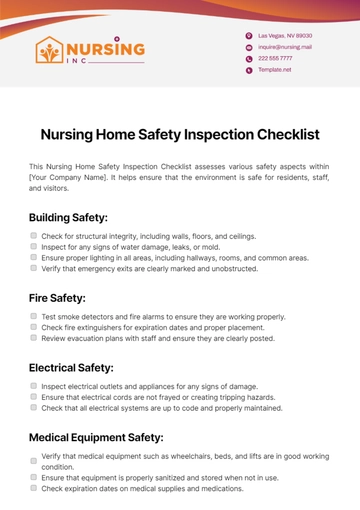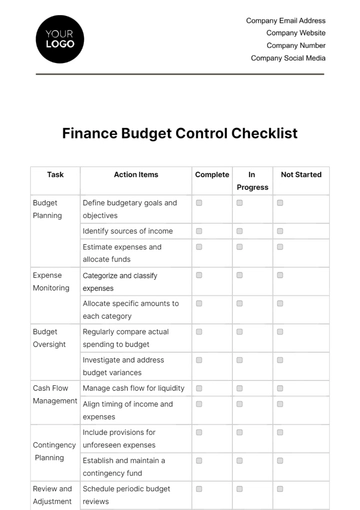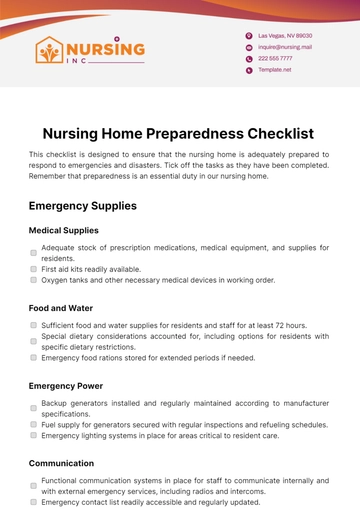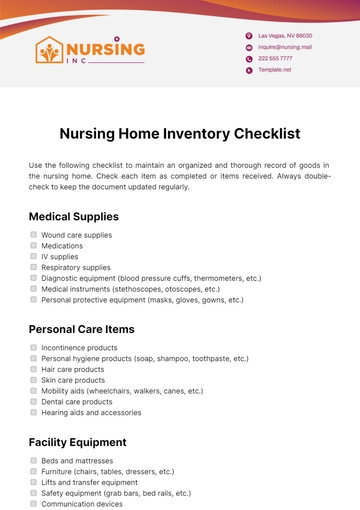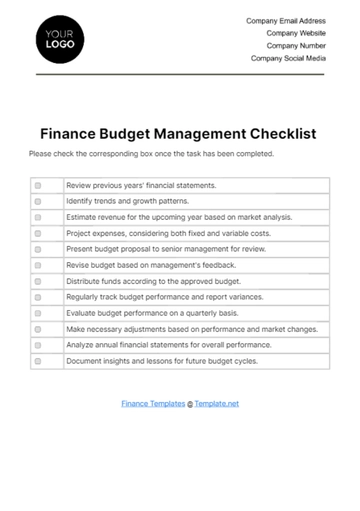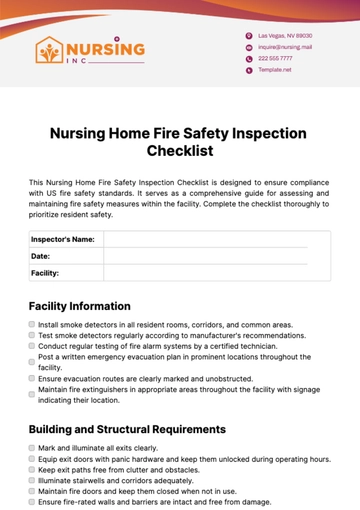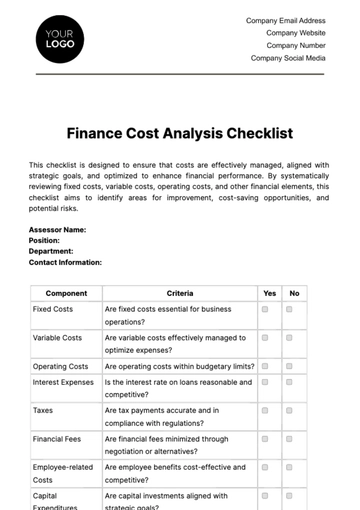Free Nursing Home Fire Safety Inspection Checklist
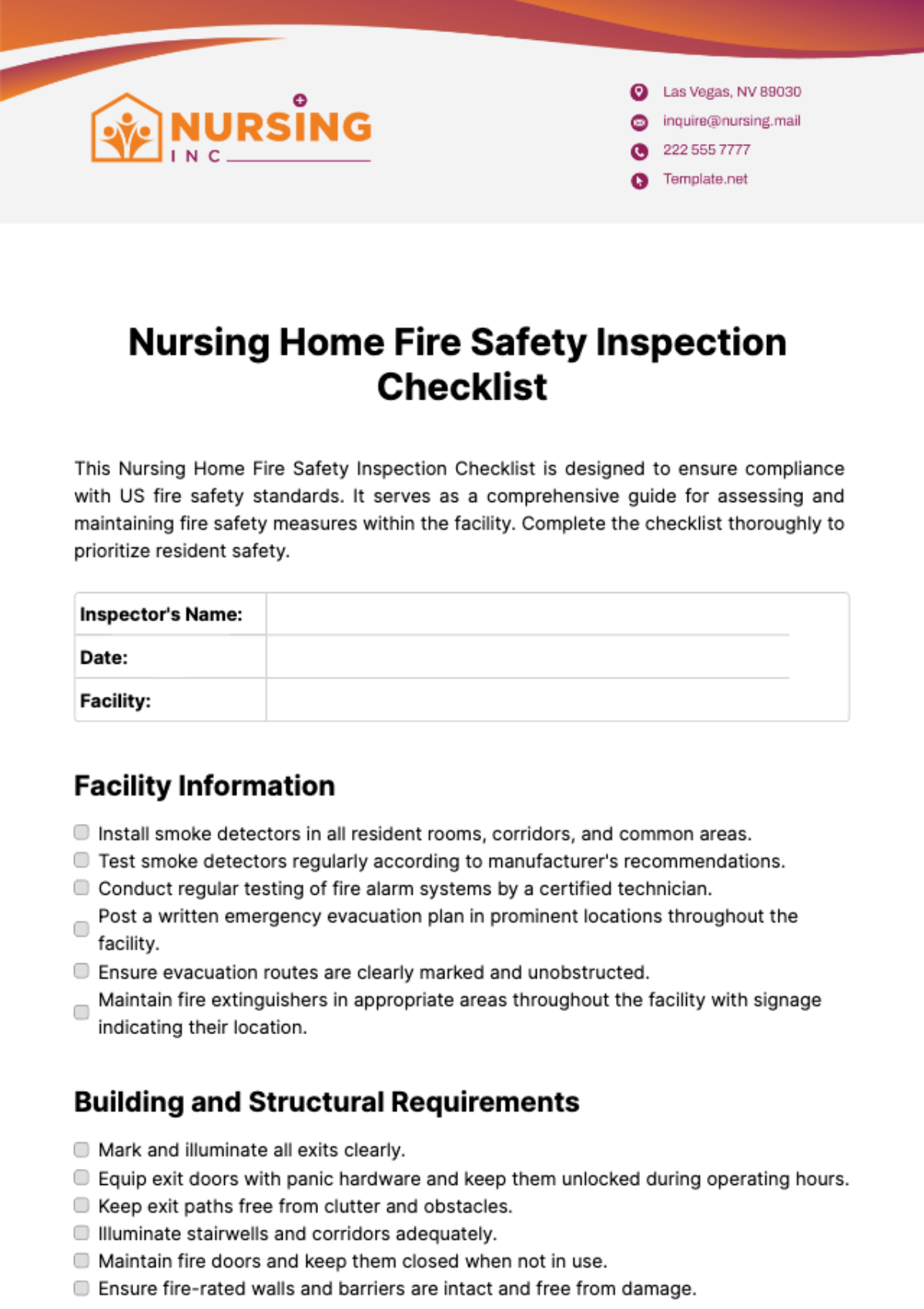
This Nursing Home Fire Safety Inspection Checklist is designed to ensure compliance with US fire safety standards. It serves as a comprehensive guide for assessing and maintaining fire safety measures within the facility. Complete the checklist thoroughly to prioritize resident safety.
Inspector's Name: | |
Date: | |
Facility: |
Facility Information
Install smoke detectors in all resident rooms, corridors, and common areas.
Test smoke detectors regularly according to manufacturer's recommendations.
Conduct regular testing of fire alarm systems by a certified technician.
Post a written emergency evacuation plan in prominent locations throughout the facility.
Ensure evacuation routes are clearly marked and unobstructed.
Maintain fire extinguishers in appropriate areas throughout the facility with signage indicating their location.
Building and Structural Requirements
Mark and illuminate all exits clearly.
Equip exit doors with panic hardware and keep them unlocked during operating hours.
Keep exit paths free from clutter and obstacles.
Illuminate stairwells and corridors adequately.
Maintain fire doors and keep them closed when not in use.
Ensure fire-rated walls and barriers are intact and free from damage.
Resident Safety
Inform residents of fire safety procedures upon admission and periodically thereafter.
Identify residents with mobility issues and make accommodations for their evacuation.
Equip resident rooms with emergency call systems for summoning assistance in the event of a fire.
Store oxygen tanks safely and in accordance with regulations.
Enforce smoking policies and provide designated smoking areas away from the building.
Encourage residents to participate in fire drills to familiarize themselves with evacuation procedures.
Kitchen and Cooking Areas
Train kitchen staff in fire prevention techniques and the proper use of kitchen equipment.
Maintain and regularly inspect cooking appliances and ventilation systems.
Store flammable materials safely and away from cooking areas.
Clean grease buildup regularly from cooking equipment and exhaust hoods.
Install and test fire suppression systems according to manufacturer's guidelines.
Additional Considerations
Conduct annual fire safety inspections by the local fire department or other authorized agency.
Promptly address and correct deficiencies identified during inspections.
Maintain records of fire safety training, drills, and inspections for review.
Comments/Recommendations

[Inspector's Name]
[Month, Day, Year]
- 100% Customizable, free editor
- Access 1 Million+ Templates, photo’s & graphics
- Download or share as a template
- Click and replace photos, graphics, text, backgrounds
- Resize, crop, AI write & more
- Access advanced editor
Prioritize fire safety with the Nursing Home Fire Safety Inspection Checklist Template from Template.net. This editable and customizable template facilitates thorough inspections, identifying potential fire hazards and ensuring compliance with fire safety regulations. Editable in our Ai Editor Tool, it's essential for preventing fire incidents, protecting residents and staff, and maintaining a safe living and working environment in your nursing home.
You may also like
- Cleaning Checklist
- Daily Checklist
- Travel Checklist
- Self Care Checklist
- Risk Assessment Checklist
- Onboarding Checklist
- Quality Checklist
- Compliance Checklist
- Audit Checklist
- Registry Checklist
- HR Checklist
- Restaurant Checklist
- Checklist Layout
- Creative Checklist
- Sales Checklist
- Construction Checklist
- Task Checklist
- Professional Checklist
- Hotel Checklist
- Employee Checklist
- Moving Checklist
- Marketing Checklist
- Accounting Checklist
- Camping Checklist
- Packing Checklist
- Real Estate Checklist
- Cleaning Checklist Service
- New Employee Checklist
- Food Checklist
- Home Inspection Checklist
- Advertising Checklist
- Event Checklist
- SEO Checklist
- Assessment Checklist
- Inspection Checklist
- Baby Registry Checklist
- Induction Checklist
- Employee Training Checklist
- Medical Checklist
- Safety Checklist
- Site Checklist
- Job Checklist
- Service Checklist
- Nanny Checklist
- Building Checklist
- Work Checklist
- Office Checklist
- Training Checklist
- Website Checklist
- IT and Software Checklist
- Performance Checklist
- Project Checklist
- Startup Checklist
- Education Checklist
- Home Checklist
- School Checklist
- Maintenance Checklist
- Planning Checklist
- Manager Checklist
- Wedding Checklist
- Vehicle Checklist
- Travel Agency Checklist
- Vehicle Inspection Checklist
- Interior Design Checklist
- Backpacking Checklist
- Business Checklist
- Legal Checklist
- Nursing Home Checklist
- Weekly Checklist
- Recruitment Checklist
- Salon Checklist
- Baby Checklist
- Equipment Checklist
- Trade Show Checklist
- Party Checklist
- Hospital Bag Checklist
- Evaluation Checklist
- Agency Checklist
- First Apartment Checklist
- Hiring Checklist
- Opening Checklist
- Small Business Checklist
- Rental Checklist
- College Dorm Checklist
- New Puppy Checklist
- University Checklist
- Building Maintenance Checklist
- Work From Home Checklist
- Student Checklist
- Application Checklist
